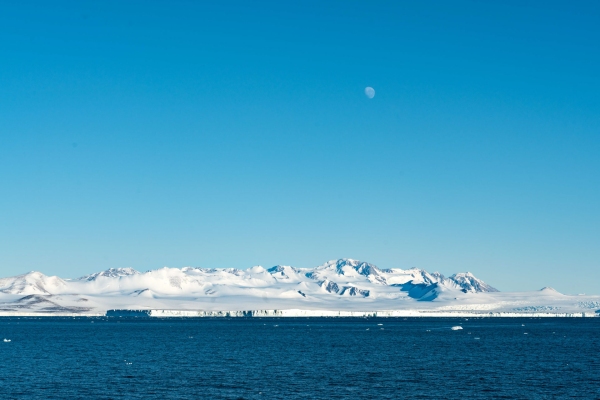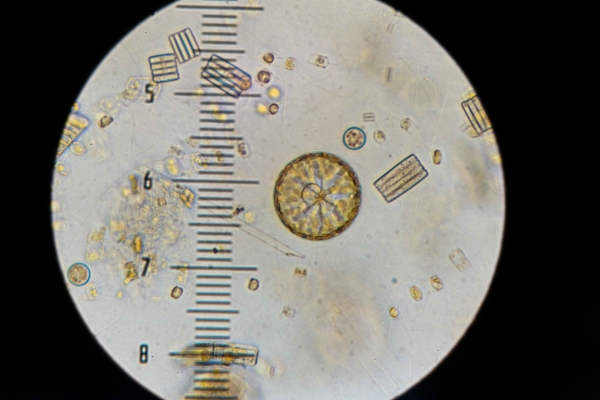A Glimpse into the Antarctic micro-verse.
Questions of scale frequent the mind of Antarctic researchers. The landscape begs the questions of distance, size, and connectivity. To look upon such a vast, desolate landscape and know the unimaginable terrain and distances that lie beyond each mountain fills our minds with wonder. Wonder about the explorers that saw the same beautiful but harsh landscape in front of us and pushed further, sought beyond. Wonder about the transition you observe as we slowly make our way to the icy south. And for us on the microbial team, wonder about what is happening on the micro-scale.
The anticipation grows from the feeling of the first chill in the air to signs of ice and the much-awaited sight of the continent. We see changes in the water early: the temperatures cool, the colour changes, new animals appear, and we encounter thousands of different micro-universes with peculiar designs and functions.
We observe from the pico-scale (light) and nano-scale (trace metals and other chemistry) through to the micro-scale (bacteria, phytoplankton, and zooplankton). Although the scale we study is small, the processes and communities form the core of the health of the ecosystems around us. We are working hard to understand how changes in the Earth’s climate may impact these infinite micro-verses.
We have been collecting samples almost every day from our start in New Zealand to our furthest point south. To see the changes across time we compare these real-time measurements with those on past voyages. This contributes to our baseline understanding and helps us recognize any potential impacts of climate change. We combine these observations across time with spatial studies to understand how different water masses, land, and ice interconnect to structure the ecosystem around us.
Probably most exciting for all of us is our work along the Antarctic coast. Here, we sample nearshore and offshore to build a better picture of how meltwater from glaciers and sea-ice and runoff from the iron-rich volcanic terrain is affecting the system. This work addresses one of the big questions of climate change on the Antarctic marine system: what effect will the increased melting of old, chemically distinct ice have on the surrounding environment?
It is interesting to watch all of the pieces of our science story come together with each day’s water sampling and our long term experiments. We function as a complex network, with each part having a crucial role in the successful function of the whole. It starts with the ship’s officers and science leads getting us where we need to be in the ocean when we need to be there. Then, the crew and technicians who make sure our sampling instruments are set up and working and deployed successfully. Last, the diverse array of scientists on our team get to work determining what depths we sample at and how we carry out each day’s experiment. This part has many layers that, when brought together, give us a peak into the micro-verse. We begin to understand how photons of light, particles of energy (nutrients and food), and infinitely complex forms of microbial life are interacting together, and with the changing world around them, to create the base of the world around us.
In our time here we have already learnt a lot about how diverse and dynamic the Ross Sea is, how much of an influence the Antarctic coast has on the surrounding waters, and what predicted changes pose the biggest threat to the ecosystem. And there is still, as always, so much more to learn.
As things wind down, we find ourselves stealing more moments of serenity to appreciate the uniqueness of the ocean and land around us, the hard work of all the people on board with us and all of the tiny microbes that keep it going.




